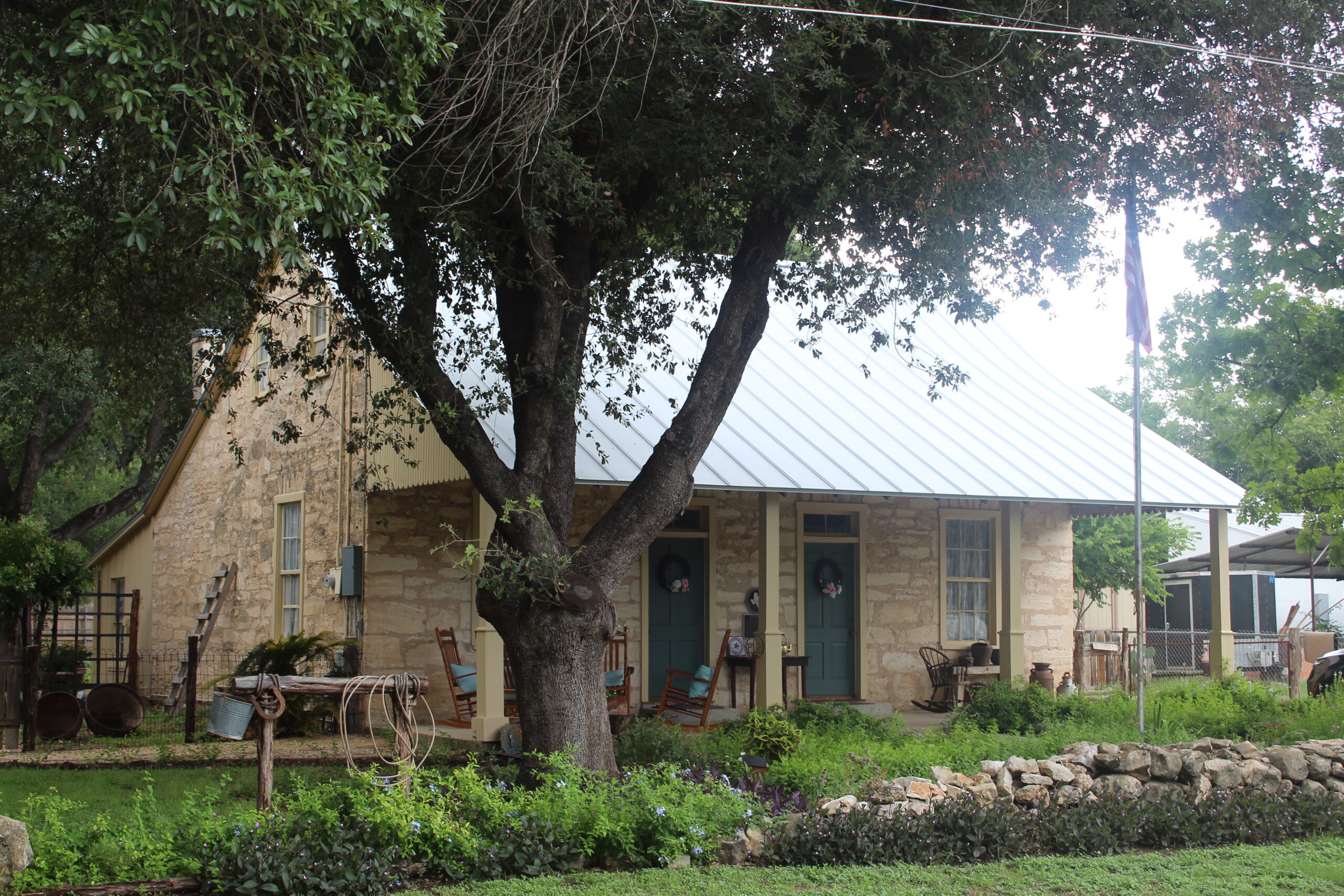
Louis Haller
1875
The Louis Haller home served as an important residence, and at one point hosted government offices during its history. Haller emigrated to America on the Queen Victoria in 1945, according to the booklet, Pioneer Castroville Homes: Castro Garden Club (1994).
In the 1850 Castroville census, Louis Haller (1831 – 1920) lived with his father and mother, Antone Frank and Frances or Francisca. Antone, the head of the household, was listed as a wagoner, while Louis and his brother Chistolph were laborers. Also listed in the census is their sister Emmale.
The Garden Club publication notes that Louis lived in Seguin, New Braunfels and San Antonio before settling in Castroville. The following census (1860) lists Louis as a farmer and that he lived with his mother, potentially his older brother, and a married housekeeper named Emily who perhaps is their sister, Emmale.
In 1871, Haller married Leonia or Leona Marie Naeglin (1846 – 1918) and had children named Magdelina, Alfonse L. (1871), Francisca, Mary (1877), Edward (1879), Albert F. (1881), Anton or Antoine (1882) and John (1884), according to the 1900 census. It also notes that they had nine living children and five deceased; a son Louis appears on the 1880 census as a 3-month-old but not on future census documents.
The 1880 census also lists Louis as a barkeeper. An official deed for his property is dated August 1884, bought for $50 from Russel Howard. Several sources state that Mrs. Haller purchased the home or that it was built in 1877.
Louis Haller took on many occupations and roles that made him an important figure in Castroville history. A 1980s column mentions that he built the Naegelin House (601 Vienna). Newspapers referred to him as captain which may allude to his service as a wagoneer in the Confederate army. It further states that he was also a Native American Scout under Captain John Hays of the Texas Rangers.
A newspaper article notes that he marshaled a procession of the surviving first colonists during Castroville’s 50-year celebration. He died in 1920 at age 89 while living with his 5-year-old grandson Leeroy, son of Mary, and five of his single children: Anton, Mary, Edward, Albert and John.
The Louis Haller Home is a 1.5- story stone home, rectangular in plan, and typical of the Alsatian type. The home is notable for its exposed stone on the front and side facades and its particularly steep side-gabled roof with posterior saltbox additions.
Its front elevation features four symmetrical bays with stone jack arches and subtle quoining on the corners. Its two central bays are doors leading to the structure’s two original rooms while the remaining two bays are double-hung six paned windows. Original openings on the front facade appear to be maintained.
Windows of this same type are centered on the side facades on the first floor, also with their respective stone jack arches. The original home’s two rooms house a bedroom and living room today. The first of the two shed additions likely occurred near the time of the original construction as there is no break in the exterior stone walls. The first currently features a dining, living, and kitchen area and the later shed addition houses two bathrooms, a laundry area and a screened-in porch.
Other additions include an interior stair and a raised roof as indicated by stone work on the side facades. The stonework also suggests that this home originally boasted central windows in its gables that were later removed and traded for two symmetrical double-hung windows. This further supports that this home originally hosted the Alsatian chimney and window condition.
The curved chimney shaft on the interior, the offset fireplace in the dining room, and the centered exterior chimney all contribute evidence to this likely historic condition.
One of the home’s original back windows, which now serves as a living room, features support shelving today whereas the other was filled in to properly make room for the added interior stair. This stair leads to the two bedrooms and closets that were transformed from the original lofted sleeping area. This level has the original cypress flooring, unlike the first floor which was replaced with a concrete slab and tile due to a termite infestation.
Underneath the front porch’s metal standing seam roof, one may find the original cypress beams between recent wood reinforcement. Original beams can also be found on the interior ceilings and have been painted brown after a previous owner covered them with mustard yellow paint; some were reinforced with steel applications.
The American Legion purchased the home in 1966 and took on restoration efforts in August 1969, according to a local newspaper report. A later clipping published in 1980 states that the completed home was used for public meetings.
The home was also featured in the 1975 film Race with the Devil. Garden Club publications mention the home being featured in Texas Architect Magazine.
Many decorative enhancements have been applied to the home by the current owner including a painted “H” to honor the historic owners, the Hallers, painted stenciling around the still functioning fireplace, and added a window-like shelf in the primary bathroom serving as a nod to the living room’s historic shelf. This home has a Texas Historical Marker, the Special Castroville Home Marker and the Pioneer Castroville Home Marker.